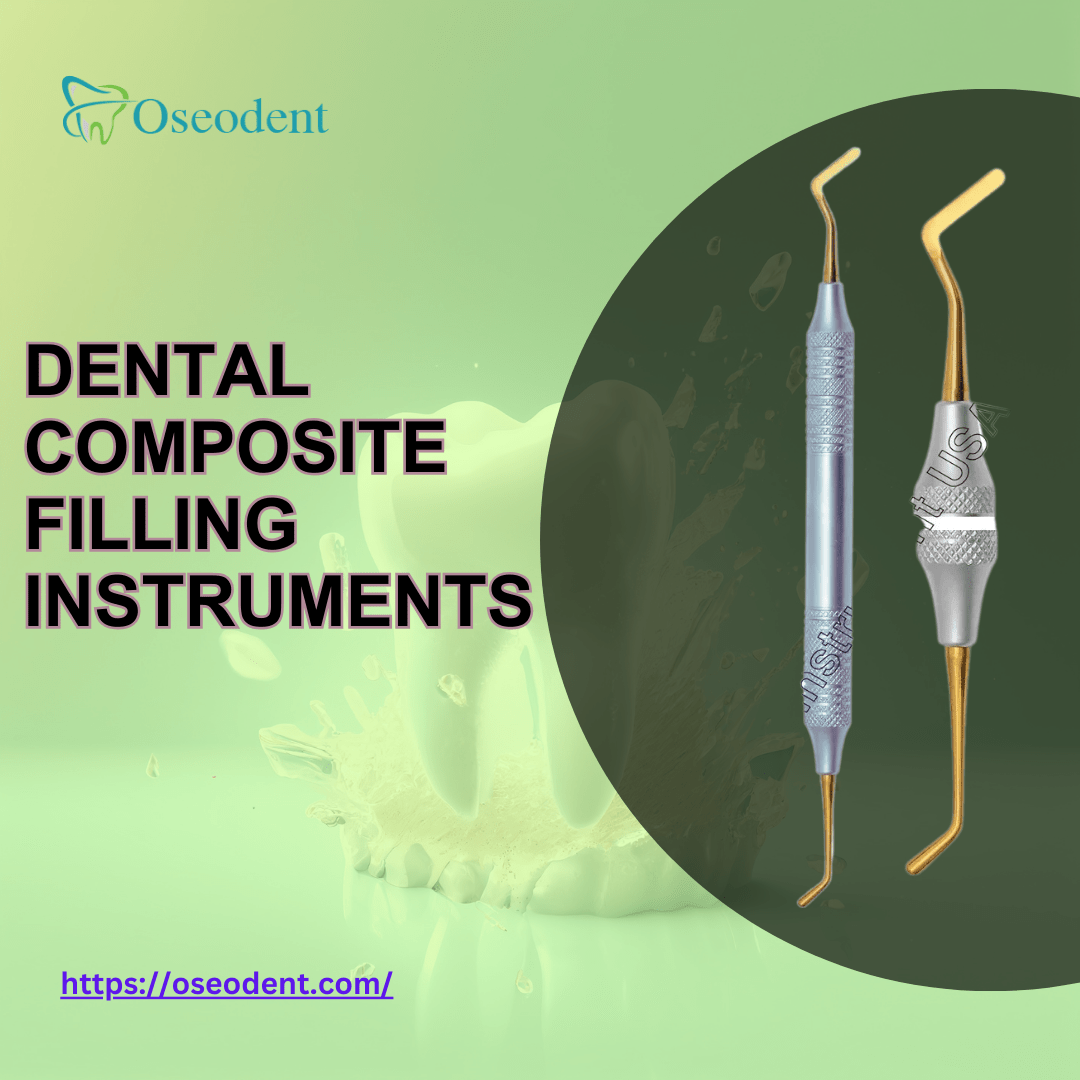In modern dentistry, having the right tools is essential for providing top-quality care. Among these tools, composite instruments are crucial for effective and aesthetic restorations. This blog highlights five must-have dental composite instruments that every dentist should include in their practice. By understanding these tools, you can enhance your restorative techniques and improve patient satisfaction.
1. Composite Placement Instruments

Composite placement instruments are fundamental in any dental practice. These tools are specifically designed for placing composite materials into prepared cavities. They usually have a paddle end for initial placement and a condensing end for shaping the material. This precision ensures that the composite adheres well to the tooth surface, resulting in durable and aesthetically pleasing restorations.
Using high-quality placement instruments can significantly improve your workflow. Instruments with titanium nitride coatings reduce stickiness. This feature allows for smoother placement and manipulation of composites, enhancing efficiency and minimizing patient discomfort during procedures.
2. Composite Carvers

After placing the composite material, you need to shape it to match the natural anatomy of the tooth. This is where composite carvers come into play. These thin-bladed instruments are crucial for sculpting the composite material into the desired form. Whether you’re creating occlusal anatomy in posterior teeth or refining contours in anterior restorations, carvers are essential.
Composite carvers come in various designs, including rounded and pointed tips. This variety allows you to access interproximal areas and cervical crevices effectively. By using these specialized tooth filling tools, you can achieve restorations that blend seamlessly with the surrounding tooth structure.
3. Composite Burnishers
Achieving a smooth and polished surface is vital for both aesthetics and longevity after shaping the restoration. Composite burnishers are designed for this purpose. These instruments help refine the surface of the composite, ensuring a high-gloss finish that mimics natural tooth enamel.
Burnishers come in different shapes and sizes, allowing you to choose the best option for each restoration. Incorporating burnishers into your toolkit elevates the quality of your work. Patients appreciate the final appearance of their restorations when they look natural and polished.
4. Plastic Instruments in Dentistry

While metal instruments are common in restorative procedures, plastic instruments in dentistry offer unique advantages when working with composites. These non-metallic tools prevent sticking, making them ideal for manipulating viscous materials without compromising their integrity.
Plastic instruments are particularly beneficial in delicate areas or during precise procedures. They allow smooth placement and shaping of composites while minimizing damage to both the instrument and restoration itself. By incorporating plastic instruments into your practice, you enhance efficiency and improve patient comfort during treatments.
5. Composite Finishing Tools
Finishing tools are essential for achieving optimal results in composite restorations. These dental cleaning tools help refine the margins of the restoration and remove any excess material before curing. Finishing tools come in various forms, including discs, strips, and cups.
Using finishing tools effectively enhances the overall quality of your restorations. They help create smooth transitions between natural tooth structure and composite material. This reduces plaque accumulation around margins and improves long-term outcomes for patients.
Conclusion

In summary, equipping your dental practice with essential composite instruments is crucial for delivering high-quality restorative care. The five must-have dental composite instruments outlined in this blog—placement instruments, carvers, burnishers, plastic instruments, and finishing tools—are vital for achieving optimal results.
By investing in these tools and understanding their applications, you can enhance your efficiency during procedures while improving patient satisfaction with their results. As you refine your skills in restorative dentistry, remember that having the right dental filling tools makes a significant difference in providing exceptional care.
Stay ahead by incorporating these essential dentistry instruments into your practice today! Your patients will appreciate the quality care they receive from a dentist equipped with the best tools available.
FAQs
What are composite instruments used for in dentistry?
Composite instruments are specialized tools designed for placing, shaping, and finishing composite materials during dental restorations.
Why are dental composite instruments important?
They ensure accurate placement and manipulation of composite materials, leading to better restoration quality and patient satisfaction.
What types of dental composite instruments should I have?
Essential types include composite placement instruments, carvers, burnishers, plastic instruments, and finishing tools.
How do plastic instruments differ from metal instruments in dentistry?
Plastic instruments prevent sticking when working with composites, making them ideal for delicate procedures and minimizing damage to restorations.
What features should I look for in dental filling tools?
Look for ergonomic designs, durable materials, non-stick coatings, and versatility to handle various restorative tasks.
How can I maintain my composite instruments?
Regular cleaning, proper sterilization, and avoiding cross-use with other procedures can help extend the life of your instruments.
Are titanium-coated instruments better than stainless steel?
Yes, titanium-coated instruments reduce stickiness and provide better precision while being lighter and more comfortable to use.
What are the benefits of using finishing tools in composite restorations?
Finishing tools refine restoration margins, improve aesthetics, and reduce plaque accumulation around the restoration edges.
Can I use the same instruments for different types of dental procedures?
It’s best to use specific instruments for their intended purpose to maintain their effectiveness and avoid contamination.
How do I choose the right composite instruments for my practice?
Consider factors like material quality, ergonomic design, versatility, and specific needs based on the types of restorations you perform.



